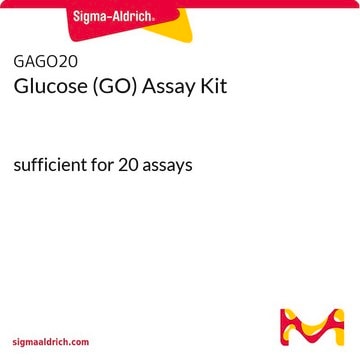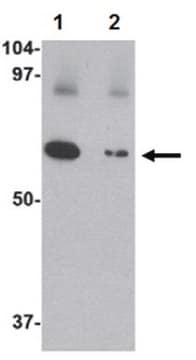If this product has an expiration or retest date, it will be shown on the Certificate of Analysis (COA, CofA). If there is no retest or expiration date listed on the product's COA, we do not have suitable stability data to determine a shelf life. For these products, the only date on the COA will be the release date; a retest, expiration, or use-by-date will not be displayed.
For all products, we recommend handling per defined conditions as printed in our product literature and website product descriptions. We recommend that products should be routinely inspected by customers to ensure they perform as expected.
For products without retest or expiration dates, our standard warranty of 1 year from the date of shipment is applicable.
For more information, please refer to the Product Dating Information document: https://www.sigmaaldrich.com/deepweb/assets/sigmaaldrich/marketing/global/documents/449/386/product-dating-information-mk.pdf
Wichtige Dokumente
MAK071
Pyruvate Assay Kit
sufficient for 100 colorimetric or fluorometric tests
Synonym(e):
Assay Kit for Pyruvate Detection
About This Item
Empfohlene Produkte
Verwendung
sufficient for 100 colorimetric or fluorometric tests
Nachweisverfahren
colorimetric
fluorometric
Relevante Krankheit(en)
gastrointestinal diseases; cancer
Lagertemp.
−20°C
Angaben zum Gen
human ... PKLR(5313) , PKM2(5315)
mouse ... PKLR(18770) , PKM2(18746)
rat ... PKLR(24651) , PKM2(25630)
Allgemeine Beschreibung
Eignung
Prinzip
Ersetzt durch
Signalwort
Danger
H-Sätze
Gefahreneinstufungen
Aquatic Chronic 3 - Resp. Sens. 1 - Skin Sens. 1
Lagerklassenschlüssel
10 - Combustible liquids
Hier finden Sie alle aktuellen Versionen:
Analysenzertifikate (COA)
Die passende Version wird nicht angezeigt?
Wenn Sie eine bestimmte Version benötigen, können Sie anhand der Lot- oder Chargennummer nach einem spezifischen Zertifikat suchen.
Besitzen Sie dieses Produkt bereits?
In der Dokumentenbibliothek finden Sie die Dokumentation zu den Produkten, die Sie kürzlich erworben haben.
Artikel
Warburg effect enhances glucose to lactate conversion in tumor cells, regardless of oxygen levels; impacting cancer metabolism since 1924.
-
How can I determine the shelf life / expiration / retest date of this product?
1 answer-
Helpful?
-
-
How is shipping temperature determined? And how is it related to the product storage temperature?
1 answer-
Products may be shipped at a different temperature than the recommended long-term storage temperature. If the product quality is sensitive to short-term exposure to conditions other than the recommended long-term storage, it will be shipped on wet or dry-ice. If the product quality is NOT affected by short-term exposure to conditions other than the recommended long-term storage, it will be shipped at ambient temperature. As shipping routes are configured for minimum transit times, shipping at ambient temperature helps control shipping costs for our customers. For more information, please refer to the Storage and Transport Conditions document: https://www.sigmaaldrich.com/deepweb/assets/sigmaaldrich/marketing/global/documents/316/622/storage-transport-conditions-mk.pdf
Helpful?
-
-
Can I warm my pyruvate Assay buffer to 37°C to dissolve the precipitated flakes at the bottom, or will that disrupt the assay?
1 answer-
All components should be thawed at room temperature. If the components are fully thawed at room temperature and there is still precipitate in the Assay buffer, follow this step: It is advised that the buffer can be kept at 37°C for a short time to see if it helps. This brief exposure to 37°C should not negatively affect the assay; in fact, many researchers keep the buffer bottle at this temperature in a water bath while thawing it.
Helpful?
-
Active Filters
Unser Team von Wissenschaftlern verfügt über Erfahrung in allen Forschungsbereichen einschließlich Life Science, Materialwissenschaften, chemischer Synthese, Chromatographie, Analytik und vielen mehr..
Setzen Sie sich mit dem technischen Dienst in Verbindung.





